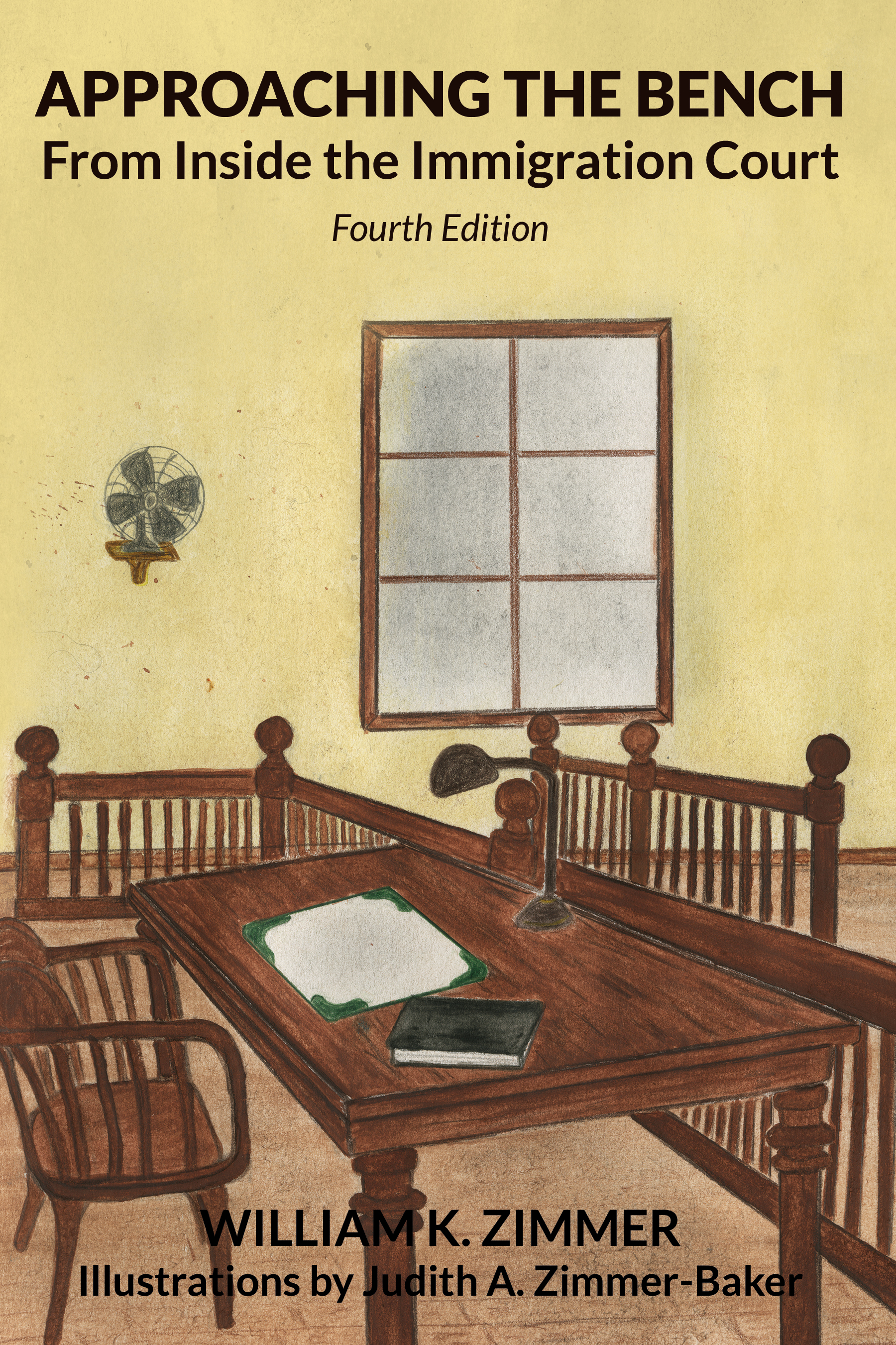Administrative Fact Finding Not Subject to Judicial Review

The procedural history, facts of record, holding and rationale in Pankajkumar S. Patel, et al. v. Merrick B. Garland, 596 U. S. ____ (2022) are as follows:
Case History
Pankajkumar S. Patel is the lead Petitioner (“the Petitioner”). His wife, the second Petitioner, is a derivative beneficiary of the lead Petitioner’s adjustment of status application under section 245(i) of the Immigration and Nationality Act, as amended (“the Act”).
The Petitioners conceded that they entered the United States illegally in the 1990s, as charged under section 212(a)(6)(A)(i) of the Act (an alien present in the United States without being admitted or paroled, or who arrives in the United States at any time or place other than designated by the Attorney General).
In 2007, the Petitioner applied to the United States Citizenship and Immigration Services (“USCIS”) for adjustment of status under section 245(i) of the Act.
The USCIS denied Patel’s application for adjustment of status.
Ultimately, in removal proceedings, an Immigration Judge denied the Petitioner’s application for adjustment of status and ordered that both Petitioners be removed from the United States.
The Petitioner appealed the Immigration Judge’s decision to the Board of Immigration Appeals (“BIA”).
The BIA dismissed the appeal.
The Petitioner filed a petition for review with the Eleventh Circuit Court of Appeal.
A panel of the Eleventh Circuit Court of Appeal dismissed the Petitioner’s petition for review.
On rehearing en banc (i.e. legalese meaning by the full court of all the judges) the Eleventh Circuit Court of Appeal agreed with the panel decision to dismiss the Petitioner’s petition for review.
The Petitioners then filed a writ of certiorari (i.e. a document which a losing party in a United States circuit court of appeal can file with the United States Supreme Court asking it to review the decision of a lower court) with the United States Supreme Court.
The United States Supreme Court granted the writ of certiorari.
Facts
The Petitioners entered the United States illegally in the 1990s.
In 2007, the Petitioner applied to the USCIS for adjustment of status under section 245(i) of the Act. See 8 CFR §245.2(a)(1).
While his adjustment application was pending, the Petitioner applied for a Georgia driver’s license.
On that application, the Petitioner checked a box falsely stating that he was a United States citizen.
The USCIS denied the Petitioner’s adjustment application because he was deemed inadmissible for lawful permanent residence under section 245(i)(2)(A) of the Act. Specifically, section 212(a)(6)(C)(ii)(I) of the Act renders inadmissible an “alien who falsely represents, or has falsely represented, himself or herself to be a citizen of the United States for any purpose or benefit under” State or federal law.
Several years later, the Department of Homeland Security (“DHS”) initiated removal proceedings against the Petitioners charging that they were present in the United States without having been admitted. See section 212(a)(6)(A)(i) of the Act.
The Petitioners conceded in removal proceedings that they were subject to removal as charged, and the Petitioner again applied for adjustment of status under section 245(i) of the Act.
The Petitioner conceded that he had checked the “citizen” box on his Georgia driver’s license application. Nevertheless, the Petitioner argued that he had checked the “citizen” box by accident without the subjective intent necessary for a false representation to be a United States citizen to actuate the ground of inadmissibility under section 212(a)(6)(C)(ii)(I) of the Act.
The Immigration Judge did not find the Petitioner’s explanation credible and denied the Petitioner’s adjustment application for the same reason it had been denied by the USCIS; that the Petitioner was inadmissible for lawful permanent residence pursuant to section 245(i)(2)(A) of the Act because he is inadmissible under section 212(a)(6)(C)(ii)(I) of the Act for making a false claim to United States citizenship on his Georgia driver’s license application.
The BIA determined that the Immigration Judge’s factual findings were not clearly erroneous and dismissed the appeal.
The Petitioner filed a petition for review with the Eleventh Circuit court of Appeal review, asserting, in conformance with section 242(b)(4)(B) of the Act, that any reasonable judge would have been “compelled to conclude” that his testimony was credible and that he had made an honest mistake on his Georgia driver’s license application.
After a panel decision and a rehearing en banc, the Eleventh Circuit Court of Appeal ultimately dismissed the petition for review for lack of jurisdiction to review of “any judgment regarding the granting of relief” under section 245 of the Act (relating to adjustment of status) pursuant to section 242(a)(2)(B)(i) of the Act.
Held
Federal courts lack jurisdiction to review facts found in proceedings relating to discretionary relief under section 245 of the Act and the other provisions enumerated in section 242(a)(2)(B)(i) of the Act.
Judgement of the Eleventh Circuit Court of Appeal AFFIRMED
Rationale
The United States Supreme Court considered three competing interpretations of law.
- The Petitioner contended that the phrase “regarding the granting of relief” in section 242(a)(2)(B)(i) of the Act focuses the jurisdictional bar narrowly on a single discretionary judgment: the Immigration Judge’s decision whether to grant relief to an applicant who is eligible to receive it. Everything else is reviewable.
- The government contended that “judgment” as used in section 242(a)(2)(B)(i) of the Act refers exclusively to a decision that requires the use of discretion. Therefore, some eligibility determinations are reviewable and others are not, depending on whether or not a determination or judgement, including subsidiary determinations and judgements, is classified as discretionary or not discretionary.
- The United States Supreme Court appointed Taylor A. R. Meehan to brief and argue the case, as amicus curiae (legalese meaning friend of the court) who contended that “judgment” in section 242(a)(2)(B)(i) of the Act means any authoritative decision. Therefore, the 242(a)(2)(B)(i) prohibition of appellate review encompasses any and all decisions relating to the granting or denying of discretionary relief; and findings of fact fall within this category. Consequently, appellate courts lack jurisdiction to review them.
The United States Supreme Court reasoned as follows:
The Petitioner
- The Petitioner’s contention that “any judgment regarding the granting of relief” in section 242(a)(2)(B)(i) of the Act must narrow the meaning of “judgment” to include only the decision “whether to grant relief” appears to constrain the provision from sweeping in judgments that have nothing to do with that subject.
- However, section 242(a)(2)(B)(i) of the Act does not stop at just the grant or denial of relief; it extends to any judgment “regarding” that ultimate decision.
- The Petitioner’s interpretation to the contrary reads “regarding” out of the statute entirely.
- The Petitioner cannot explain why the bar in section 242(a)(2)(B) of the Act should be read differently from the prohibition in section 242(a)(2)(C) of the Act relating to review of a “final order” of removal for certain criminal offenses, which he admits includes prohibition of review of findings of fact.
- Both 242(a)(2)(B) and 242(a)(2)(C) of the Act preclude judicial review in the same way and bear the same relationship to section 242(a)(2)(D) of the Act.
- There is no reason to think that section 242(a)(2)(B) of the Act would allow a court to review findings of fact underlying a decision when section 242(a)(2)(C) of the Act prohibits just that.
The Government
- According to the Government, “judgment” in section 242(a)(2)(B)(i) of the Act refers exclusively to a “discretionary” decision, which the Government describes as a decision that is subjective or evaluative; and factual findings in the case under review do not fit that description.
- The Government’s cited definitions do not narrow the field in the way that the Government claims. Rather than delineating a special category of discretionary determinations, they simply describe the decision making process.
- The Government must do more than point to the word “judgment.” It must show that in context, the kind of judgment to which section 242(a)(2)(B)(i) of the Act refers is discretionary.
- However, the Government’s argument that the prohibition of appellate review is limited to discretionary judgements conflicts with the text of section 242(a)(2)(B)(i) of the Act. The bar on review applies to “any judgment.”
- Had Congress intended instead to limit the jurisdictional bar to “discretionary judgments,” it could easily have used that language—as it did elsewhere in the immigration code. See, e.g., section 236(e) of the Act (“The Attorney General’s discretionary judgment regarding the application of this section shall not be subject to review” [emphasis added]).
- In short, the Government is wrong about both text and context. A “judgment” does not necessarily involve discretion, nor does context indicate that only discretionary judgments are covered by 242(a)(2)(B)(i) of the Act.
Amicus Curiae
- The amicus curiae interpretation is the only one that fits the text and context of section 242(a)(2)(B)(i) of the Act.
- “‘“[T]he word ‘any’ has an expansive meaning.”’” Babb v. Wilkie, 589 U. S. ___, ___, n. 2 (2020) (slip op., at 5, n. 2).
- The use of “any” means that the provision applies to judgments “‘of whatever kind’” under section 245 of the Act, not just discretionary judgments or the last-in-time judgment.
- The use of “regarding” “in a legal context generally has a broadening effect, ensuring that the scope of a provision covers not only its subject but also matters relating to that subject.” Lamar, Archer & Cofrin, LLP v. Appling, 584 U. S. ___, ___ (2018) (slip op., at 7).
- Thus, section 242(a)(2)(B)(i) of the Act encompasses not just “the granting of relief,” but also any judgment relating to the granting of relief. That plainly includes factual findings.
- If Congress made “constitutional claims” and “questions of law” an exception to the jurisdictional bar in section 242(a)(2)(B)(i) of the Act, it must have left something within the rule. See section 242(a)(2)(D) of the Act.
- The major remaining category of subjects for review is questions of fact.
Commentary
As pointed out by the Petitioner in Patel v. Garland, 596 U. S. ____ (2022), the first step of the decision process relating to an application for relief from removal, regardless of whether or not the relief is discretionary or mandatory, must be to determine eligibility for relief based on a statutory standard. The second step, according to the Petitioner in Patel v. Garland, (slip op., at 13) is the discretionary decision to grant or deny the relief application.
Of course, if the relief is mandatory completion of the first step marks the end of the decision process.
For example, withholding of removal under section 241(b)(3) of the Act is mandatory rather than discretionary. If an applicant for withholding of removal establishes persecution or the risk of persecution in his or her country of nationality or last country of habitual residence is “more likely than not” the Immigration Judge must grant the application, unless the application is subject to mandatory denial.
This is why firm resettlement in a third country is a ground for mandatory denial of an asylum application, but not a ground for mandatory denial of a withholding of removal application.
Firm resettlement is a discretionary factor specified by statute and regulation that only applies to the discretionary relief of asylum and not to the mandatory relief of withholding of removal. Compare section 208(b)(2)(A)(vi) and 8 C.F.R. § 1208.13(c)(2)(B) with section 241(b)(3)(B) of the Act and 8 C.F.R. § 1208.16(d)(2). See Matter of Soleimani, 20 I&N Dec. 99, at 100, n. 2 (BIA 1989).
Returning to the subject of appellate court jurisdiction, although generally speaking the first step of the decision making process involves applying the law to facts in the record, the process that necessarily must precede this first step is fact finding.
So, in my way of thinking, there are actually three steps to decision making with regard to relief applications in immigration proceedings. The first step is fact finding. What are the facts that are relevant to the relief application? The second step is identifying the legal standard required for relief eligibility. The legal standard is statutory and usually specified in greater detail in governing regulations. The third step is applying the correct legal standard to the facts established during the first step of the process. This third step involves interpretation of the meaning of the language used in governing statutes and regulations as illuminated by precedent administrative decisions and court decisions.
It seems obvious that Patel v. Garland has removed fact finding by administrative decision makers from the scope of judicial review by appellate courts.
So what kind of change does Patel v. Garland produce in the fifth circuit for immigration practitioners?
Perhaps, a specific example will ease the task of theorizing. The Fifth Circuit Court of Appeal currently reviews, as a non-discretionary decision, an Immigration Judge’s conclusions relating to proof of ten years of continuous physical presence in the context of an application for cancellation of removal under section 240A(b)(1) of the Act which is clearly fact driven. Garcia-Melendez v. Ashcroft, 351 F. 3d 657, at 661 (5th Cir. 2003). See also, Efe v. Ashcroft, 293 F.3d 899, at 903 (5th Cir. 2002) (citing Ozdemir v. INS, 46 F.3d 6, 7 (5th Cir. 1994)). Proof of ten years of continuous physical presence is necessary to be eligible for cancellation of removal for nonpermanent residents of the United States. See section 240A(b)(1)(A) of the Act.
In the aftermath of Patel v. Garland, it seems likely that the Fifth Circuit Court of Appeal will refrain from evaluating determinations relating to certain subsidiary issues for the purpose of classifying such determinations as discretionary or non-discretionary.
Consequently, the Fifth Circuit Court of Appeal, as well as all other United States circuit courts will no longer review conclusions by Immigration Judges relating to proof of continuous physical presence and similar conclusions relating to relief applications filed in immigration proceedings. Furthermore, the same jurisdictional bar will apply to DHS decision making as well.
For the purpose of invoking jurisdiction to review administrative decisions relating to applications specified in 242(a)(2)(B)(i) of the Act as well as any other decision or action specified by statute to be in the discretion the Attorney General or the DHS, the only question that remains to be asked is whether the matter can be classified as a constitutional claim or question of law. See section 242(a)(2)(D) of the Act.

